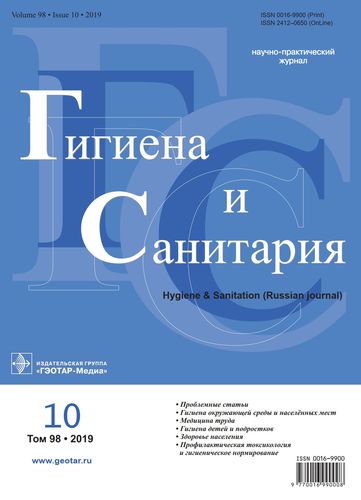Antimicrobial activity and minimum effective concentrations of chemical compounds found in disinfectants
- 作者: Shestopalov N.V.1,2, Fedorova L.S.1, Skopin A.Y.1,3
-
隶属关系:
- Sсiеntifiс Rеsеarсh Disinfесtology Institutе
- Russian Medical Academy of Continuing Professional Education, Ministry of Health of the Russian Federation
- I.M. Sechenov First MGMU of the Ministry of Health of the Russian Federation (Sechenov University)
- 期: 卷 98, 编号 10 (2019)
- 页面: 1031-1036
- 栏目: PROBLEM-SOLVING ARTICLES
- ##submission.datePublished##: 15.10.2019
- URL: https://bulletin.ssaa.ru/0016-9900/article/view/639719
- DOI: https://doi.org/10.47470/0016-9900-2019-98-10-1031-1036
- ID: 639719
如何引用文章
全文:
详细
作者简介
Nikolay Shestopalov
Sсiеntifiс Rеsеarсh Disinfесtology Institutе; Russian Medical Academy of Continuing Professional Education, Ministry of Health of the Russian Federation
编辑信件的主要联系方式.
Email: shestopalov.nv@gmail.com
MD, Ph.D., DSci., professor, Director of Sсiеntifiс Rеsеarсh Disinfесtology Institutе, Sсiеntifiс Rеsеarсh Disinfесtology Institutе, Moscow, Moscow,117246, Russian Federation, Professor at the Department of organization of the State Sanitary and Epidemiological Service of Further Professional Education Russian Medical Academy of Continuing Professional Education, Moscow, 125445, Russian Federation.
e-mail: shestopalov.nv@gmail.com
俄罗斯联邦L. Fedorova
Sсiеntifiс Rеsеarсh Disinfесtology Institutе
Email: noemail@neicon.ru
俄罗斯联邦
A. Skopin
Sсiеntifiс Rеsеarсh Disinfесtology Institutе; I.M. Sechenov First MGMU of the Ministry of Health of the Russian Federation (Sechenov University)
Email: noemail@neicon.ru
俄罗斯联邦
参考
- Russell A.D. Bacterial resistance to disinfectants: Present knowledge and future problems. J Hosp Infect. 1999; 43: 57-68.
- Rutala W.A. APIC guideline for selection use of disinfectants. Am J Infect Control. 1996; 24 (4): 313-42.
- Russell A.D. Bacterial resistance to disinfectants. Br J Infect Contr. 2017; 3 (3): 22-4.
- Smith K.T., Mccue K.A., Rubino J. Clostridium difficile: Evaluation of Sporicidal Activity of Disinfectants. Am J Infect Control. 2008; 36 (5): E22.
- Rutala W.A. et al. Inactivation of Mycobacterium tuberculosis and Mycobacterium bovis by 14 hospital disinfectants. Am J Med. 1991; 91 (3): 267-71.
- Best M. et al. Efficacies of selected disinfectants against. Mycobacterium tuberculosis. J Clin Microbiol. 1990; 28 (10): 2234-9.
- Frank M.J., Schaffner W. Contaminated Aqueous Benzalkonium Chloride: An Unnecessary Hospital Infection Hazard. JAMA. 1976; 236 (21): 2418-9.
- Kaslow R.A., Mackel D.C., Mallison G.F. Nosocomial Pseudobacteremia: Positive Blood Cultures Due to Contaminated Benzalkonium Antiseptic. JAMA. 1976; 236 (21): 2407-9.
补充文件







